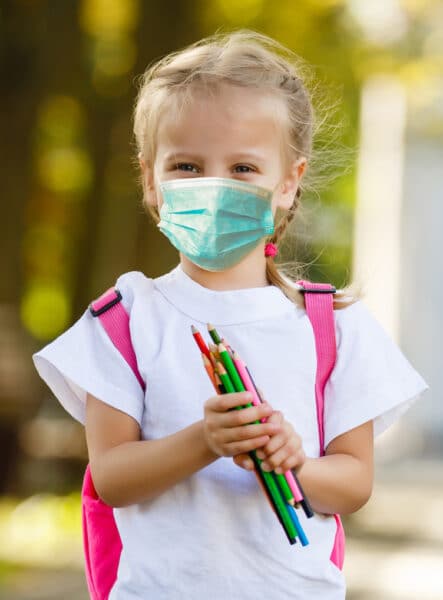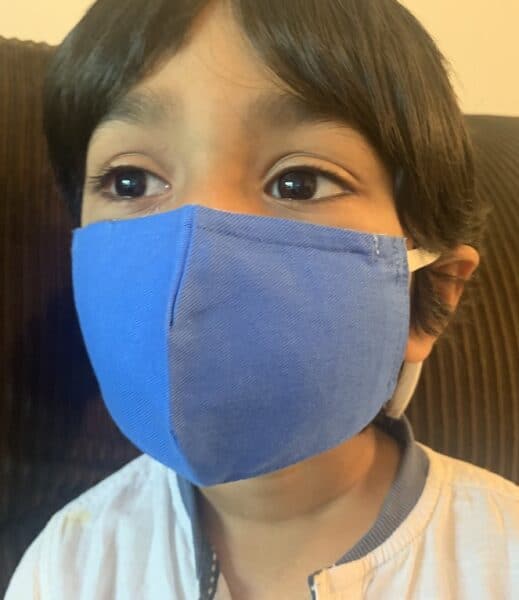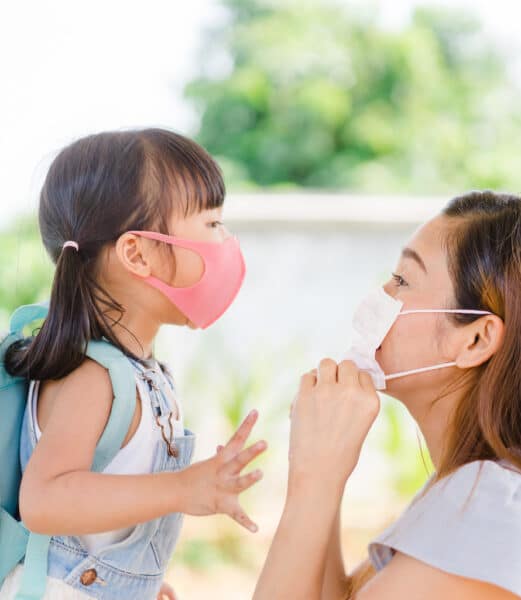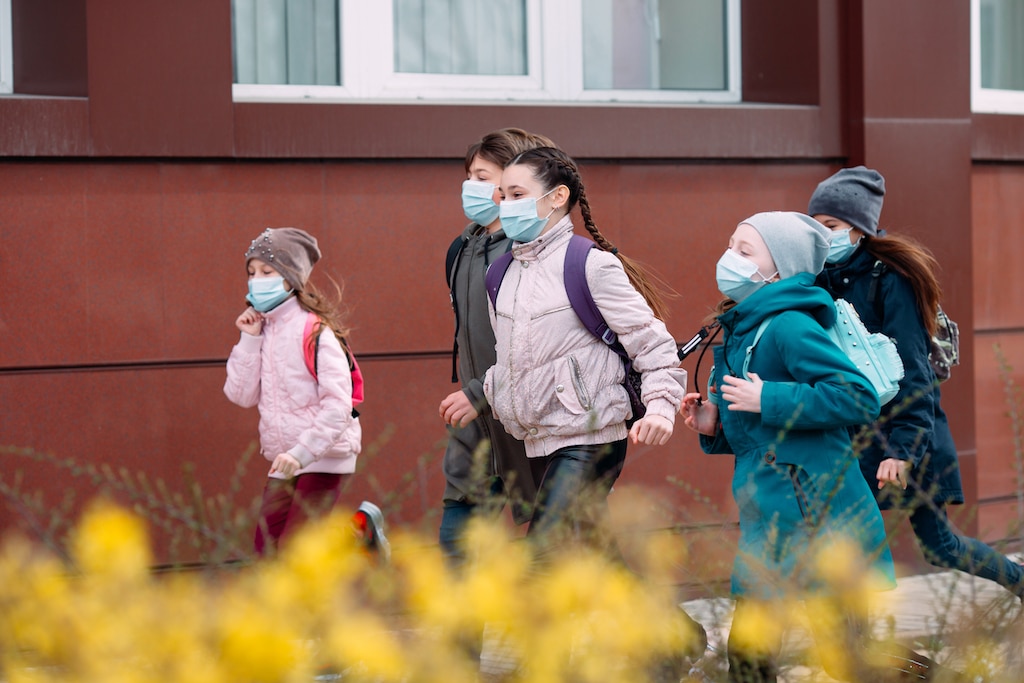According to the latest guidance from Governor Murphy and the New Jersey Department of Education, all New Jersey students over the age of two will be expected to wear masks indoors during their school day. At Willow, we plan to conduct classes outside as often as possible, using our ample outdoor learning space to give children opportunities to learn mask-free when safe social distancing can be maintained. Still, during rainy days or lessons that are best conducted inside, your Willow student could be expected to wear a mask for an extended period of time.

Masks: a new school supply for NJ students
How can you help prepare your child for masks at school?
We’ve collected tips from trusted sources and asked one of our Willow parents, Todd M., who has a daughter in second grade, to share his tips, too. Here’s what we found!
Explain and give children time to explore: Explain to young children why we wear face masks in simple words and give them time to observe and get used to this new information. Give them the time to see and watch people in masks, potentially by wearing your own mask for them or showing them photographs or drawings of people in masks. If you have an extra mask at home, let them use it in their play area to adorn stuffed animals or play doctor. Do your best to answer their questions. The American Academy of Pediatrics has great tips about what to do if your child is scared of wearing a face covering.
Older children may be hesitant to wear the mask because they are afraid of being different or have heard conflicting information about masks’ effectiveness. Assure them that masks will be required of everyone at school, answer their questions, and clearly state what is expected of them in school.
Involve your child in finding a mask that they like: “We tried a lot of different masks in the hope of finding one my daughter likes, initially starting with some from kids’ clothing brands that she knew already, although her current favorite is from a medical scrubs company called Jaanuu that I had never heard of before,” Todd shared. “I made sure to involve my daughter in the purchases so she would be okay with the appearance.”
“Feeling in control of that selection can make all the difference to kids,” said Meghan Fitzgerald, a Tinkergarten educator, in her recent blog. “Plus, all kids will be more likely to wear their mask if they feel it reflects them!” Involving your children in the process of selecting a mask can also help make them less fearful of masks and more open to trying them on.

Thanks to our Willow families who donated cotton masks for the whole school!
Know what to look for: Even as you shop with your child, there are things to look for in a mask. Research shows that the most effective cloth masks are tightly woven 100% cotton and at least double-layered. At Willow, we are recommending these types of masks, neck gaiters that are at least 90% cotton with two layers of fabrics, or disposable surgical masks. It’s also important to make sure your child can take off his or her mask. This may make masks that tie in the back less than ideal, depending on your child’s age. Comfort is also key. Make sure your child’s mask is soft, properly sized, and easy on the ears.
Be ready for a bit of trial and error: Ask your child how the mask fits and feels and be willing to try a different mask. “We’ve tried all kinds,” Todd said. “Pleated masks, center-seam masks, different fabrics, with and without a nose bridge wire. My daughter’s current favorite is a no-wire center seam mask.” No-wire masks are acceptable at Willow, but make sure they fit and stay on the face when your child speaks or moves around. An improper fit will lead to your child adjusting the mask more option – a no-no once it’s on.
Here’s a video from the American Academy of Pediatrics on how to try on a mask and wear it effectively:
Discuss pain points: “The process of finding a mask together has also helped us understand what our daughter’s biggest complaints are,” said Todd. “In our case, it’s that she is sensitive to the masks getting damp inside and wants them changed or washed frequently. So whatever we settle on for school, I know I’m going to have to send several clean masks per day for her to cycle through as needed.” Make sure you have a conversation with your child if he rejects a mask to better understand what’s bothering him rather than just assuming all masks won’t work. It may help you find a better option!

Practice wearing your masks together
Practice at home: Find time during the day here and there for the whole family to wear masks at home. “Whenever we ask our daughter to practice with a mask around the house, usually her mom or I or both of us wear one also, so it is not just us ‘making’ her wear a mask all by herself,” Todd said. Start with a short period, then make it longer each time. “I’ve found that asking her to wear the mask during an activity that she especially likes or wants to do already is by far the best,” Todd said. “We’re not big on screen time, but it has been really useful in this regard. ‘You want to watch TV? — OK, then wear this mask while you do.’ If she watches TV for an hour, that’s an easy hour with the mask.”
Meghan Fitzgerald shared other ideas in her Tinkergarten blog: “Sing silly songs in your mask and giggle at how funny they sound. An impromptu dance party to a favorite song can also work wonders. Take photos and send them to loved ones, or have a family video call in masks. These simple moments help them associate masks with positive and joyful feelings.”
Have you been practicing wearing masks at home? Let us know what has worked for you and your children! Reach out to Director of Communications Kerri O’Malley at komalley@willowschool.org.

